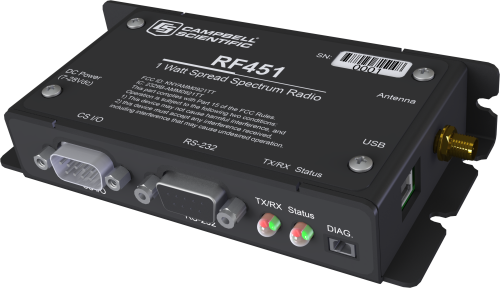
Produktlinien
| Frequency | Country Used In | Transmission Distance | |
|---|---|---|---|
RF452
|
902 to 928 MHz | US, Canada, New Zealand, Australia |
|
RF407
|
902 to 928 MHz | US, Canada |
|
RF451
|
902 to 928 MHz | US, Canada, Australia |
|
RF422
|
863 to 870 MHz | EMEA (Europe, Middle East, and Africa) |
|
RF416
|
2.450 to 2.482 GHz | FCC-certified module for the USA | 0.4 km (0.25 mi) with omnidirectional antenna (outdoors); up to 0.8 km (0.5 mi) with higher-gain directional antennas at ideal conditions |
RF432
|
— | — | — |
Other Considerations
| Frequency | Country Used In | Transmission Distance | |
|---|---|---|---|
RF427
|
905/920 MHz | — | — |
FAQs für
Number of FAQs related to Funkmodems mit breiten Spektrum: 5
Alle anzeigenWenige anzeigen
-
Spread-spectrum radios work by frequency hopping and transmitting at discrete frequencies over part of the unlicensed band, rather than by transmitting over a very wide part of the spectrum as some other devices do.
-
No. A spread-spectrum radio, like all FCC Part 15 devices, is not allowed to cause harmful interferences to licensed radio communications and must accept any interference that it receives.
-
Yes. Two spread-spectrum radios can be used to connect two computers.
-
No. Removing the interference will remove the radio signal. The radio, like all FCC Part 15 devices, is not allowed to cause harmful interferences to licensed radio communications and must accept any interference that it receives.